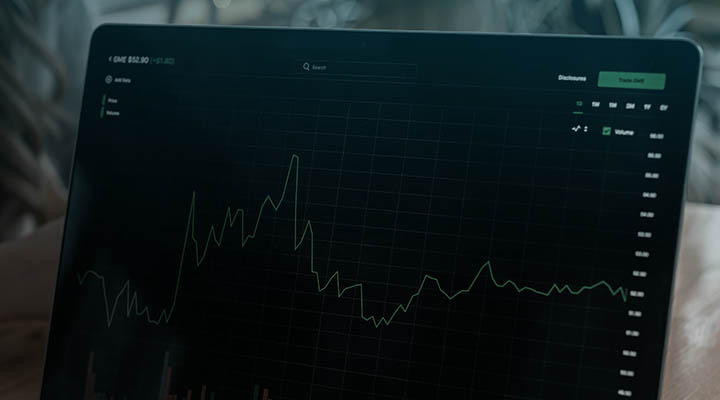As 2022 draws to a close, many households across the UK are bracing for a challenging winter.
The energy crisis will impact all families to some extent, but some face graver predicaments than others. Indeed, such is the scale of the expected price rises that up to two-thirds of all UK households – encompassing some 45 million people - could have slipped into fuel poverty by January 2023. It is a crisis in every sense of the word.
Inevitably, the situation has led to mounting pressure on energy companies to provide targeted support to those households most at risk of falling into more extreme degrees of energy poverty. Much of this pressure has come from government regulator, Ofgem, which is monitoring the progress made by energy companies via a series of market compliance reports.
In this blog, we look at some of the steps companies can take to protect their most vulnerable customers. We’ll look at some actions key players in the market have already taken, what initiatives the government have introduced, and the support that exists for energy companies looking to do more.
But first, let's tackle the question that many people find themselves asking; how did we get here in the first place? How did the average UK household go from spending around £112 per month on gas and electricity in 2021 to £180+ by the end of 2022, and what are the factors that led to this?
A CRISIS DECADES IN THE MAKING
Against a backdrop of sweeping energy sector privatisation, the 1990s commenced with a raft of newly privatised energy companies embarking on what would later be coined the ‘Dash for Gas’. The trend, driven by recently discovered and abundant gas supplies in the North Sea, hastened a move away from coal-powered electricity generation and towards gas-fired power plants.
As the years passed, Britain became increasingly reliant on gas as its main source of power. So reliant, in fact, that today 86% of British homes are heated using gas while gas-fired power plants produce more than a third of all electricity supplies.
However, by the mid-2000s, North Sea gas production began to drop against a continuing rise in demand and Britain became dependent on gas imports to remain moving. Despite this increasing reliance on imported gas, in 2017, the Rough natural gas storage facility, situated off the east coast of Yorkshire and the largest of its kind in the UK, was closed. Today less than 1% of the gas stored in Europe can be found in the UK.
ENTER COVID-19 AND THE RUSSIA-UKRAINE CONFLICT
When the Covid-19 pandemic arrived, forcing entire economies to lock down, the dramatic fall in energy usage prompted companies to choke supplies. However, as the virus’ threat receded and the world began to re-open, the industry failed to react quickly enough to a subsequent explosion in demand.
The supply lag triggered a 300% price increase for wholesale gas in Europe, and, in the UK, led to the collapse of around 30 energy firms.
With Britain now walking a perilously narrow gas supply tightrope, 2022 began with the Russian invasion of Ukraine. In response, Britain and an alliance of Western nations committed to reducing their dependence on Russian gas. The removal of a major gas exporter from the energy equation provoked further price increases, bringing us to where we are today.
WHAT SUPPORT IS BEING MADE AVAILABLE?
At a government level, every household is to receive £400 off their electricity bill under the Energy Bills Support Scheme. Bill payers will not need to do anything to access the money nor will they have to pay it back.
Households in bands A to D that pay council tax can also claim a £150 rebate back from their council to help cover bills. Details of other government initiatives, including the Warm Home Discount Scheme and Winter Fuel Payment, can be found here.
Across the energy industry, firms are also stepping up to deliver their own support packages. For example, OVO's new £50M Customer Support Package features a 200% increase in emergency top-up credit for customers on prepayment meters, and access to free technology and services such as smart thermostats and boiler checks.
Meanwhile, Octopus Energy’s Octo Assist Fund offers a number of means-tested support options, including monetary support and the loan of thermal imagery cameras for detecting heat leaks.
DEFINING VULNERABILITY
The scale of these support measures stem from a concern that those with the least could suffer the most. This stark reality is the driving reason more energy companies must develop tools that can help to identify their most vulnerable customers.
However, before this can happen, we must first define what constitutes vulnerability.
Broadly speaking, vulnerable customers will fall into one of two categories; the financially vulnerable or the clinically vulnerable (although many will fall into both). Energy companies already have a range of sources from which they can extract data in order to categorise customers and determine their level of risk.
Comparing current energy and historical energy usage will provide insight, as will the examination of call centre transcripts. Elsewhere, the Priority Services Register (PSR) contains the details of individuals entitled to additional help for reasons ranging from pregnancy to having reached pension age.
IMPROVING VULNERABILITY IDENTIFICATION
With energy companies having finite resources available to protect vulnerable customers, it’s essential that those resources reach those most in need.
Sophisticated Credit Risk Modelling is emerging as a powerful means of evaluating a customer’s tendency to default on energy payments, whereas data science and machine learning are able to identify and predict customer behaviours with increasingly high degrees of accuracy.
By developing a model that comprises considered combinations of these approaches, companies can pinpoint those households in need of support and without the need for employees to spend hours each day manually analysing datasets.
For more information on vulnerability identification, our free downloadable eBook: How Energy Companies Can Identify And Help Vulnerable Customers, takes a deeper dive into available methodologies.
We are also running complimentary two-hour workshops to provide advice and support specific to your organisation. Members of BJSS’ Data Science capability will analyse and assess your vulnerability identification workstream, current approach, and challenges, and discuss new ideas and approaches that could help.
The potential impact on everyday consumers as a result of the energy crisis requires immediate focus, and BJSS is committed to ensuring as many households as possible are protected and supported.
Contact us to see how we can support you, and your customers.
Published
April 29, 2024Reading time
4 minutesRelated posts






